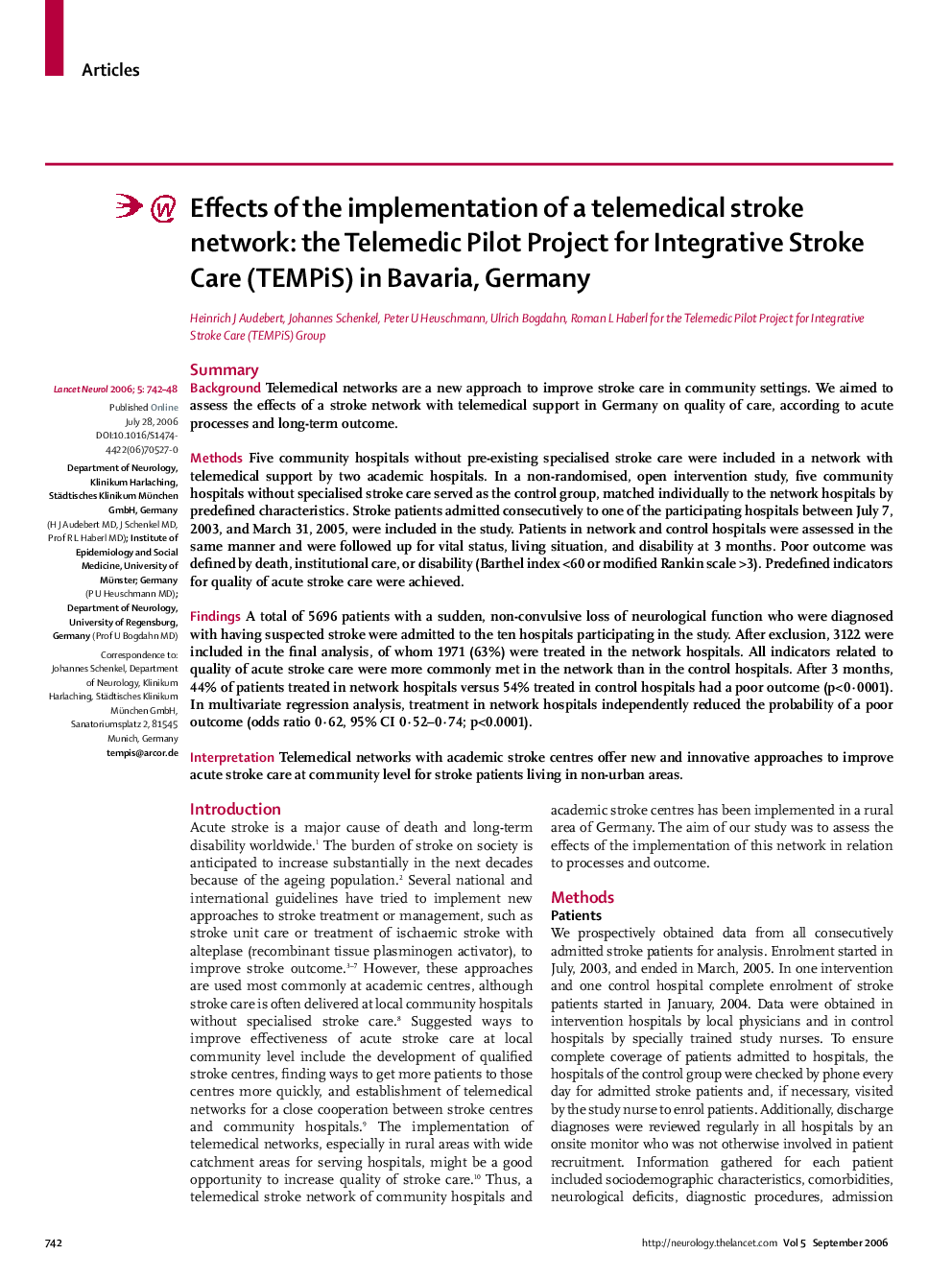| کد مقاله | کد نشریه | سال انتشار | مقاله انگلیسی | نسخه تمام متن |
|---|---|---|---|---|
| 3067912 | 1188177 | 2006 | 7 صفحه PDF | دانلود رایگان |

SummaryBackgroundTelemedical networks are a new approach to improve stroke care in community settings. We aimed to assess the effects of a stroke network with telemedical support in Germany on quality of care, according to acute processes and long-term outcome.MethodsFive community hospitals without pre-existing specialised stroke care were included in a network with telemedical support by two academic hospitals. In a non-randomised, open intervention study, five community hospitals without specialised stroke care served as the control group, matched individually to the network hospitals by predefined characteristics. Stroke patients admitted consecutively to one of the participating hospitals between July 7, 2003, and March 31, 2005, were included in the study. Patients in network and control hospitals were assessed in the same manner and were followed up for vital status, living situation, and disability at 3 months. Poor outcome was defined by death, institutional care, or disability (Barthel index <60 or modified Rankin scale >3). Predefined indicators for quality of acute stroke care were achieved.FindingsA total of 5696 patients with a sudden, non-convulsive loss of neurological function who were diagnosed with having suspected stroke were admitted to the ten hospitals participating in the study. After exclusion, 3122 were included in the final analysis, of whom 1971 (63%) were treated in the network hospitals. All indicators related to quality of acute stroke care were more commonly met in the network than in the control hospitals. After 3 months, 44% of patients treated in network hospitals versus 54% treated in control hospitals had a poor outcome (p<0·0001). In multivariate regression analysis, treatment in network hospitals independently reduced the probability of a poor outcome (odds ratio 0·62, 95% CI 0·52–0·74; p<0.0001).InterpretationTelemedical networks with academic stroke centres offer new and innovative approaches to improve acute stroke care at community level for stroke patients living in non-urban areas.
Journal: - Volume 5, Issue 9, September 2006, Pages 742–748